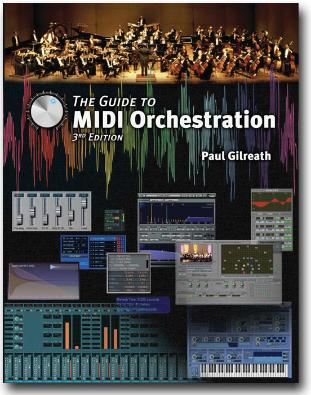

The book is a comprehensive, over 700-page hardcover text that spans more than from an overview of orchestral history to an in-depth treatment of individual orchestral groups. The Book is printed throughout in full colour.
For each instrument, detailed information is given on the sound colour, range and purpose of use. Special pages including how to use different instruments.
Accompaniment and melody, how to approach orchestration from the outset and how the orchestra can be used in orchestration. Achieving balance and interest in orchestration. Gilreath then switches gears and focuses on these elements into the MIDI and sampling environment and provides clear and concise instructions. An approach that will enable the reader to use the necessary techniques with confidence. Chapters cover studio setup and requirements, effects processing and plug-in considerations, DAW selection and mixing instructions highlight the text. Detailed reviews and recommendations from orchestral libraries. Insider interviews with mastering engineer Bob Katz. and interviews with Bob Ludwig provide useful practical information you can use in your own work. Daily. Interviews with library creators Eric Persing, Doug Rogers, and Gary Garritan. and Herb Tucmadle (among others) provide the reader with insight into various aspects of library development. The reader will gain insight into the process of orchestral library development and a glimpse into the future of the field.
The book is written for composers, arrangers, and MIDI musicians of all levels and is intended for useful for game composers, film and television composers, and traditional orchestral composers, teachers, directors, and serious amateurs. The MIDI Orchestration Guide is a unique guide to MIDI orchestration. that provides the necessary information for composers who require the best possible instrumentation. To achieve successful and realistic MIDI orchestrations.